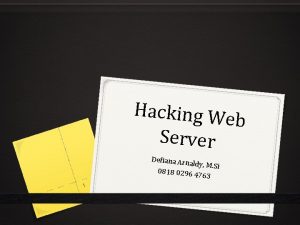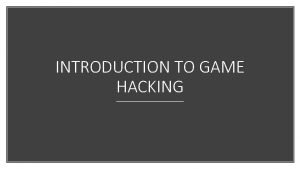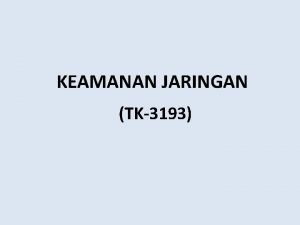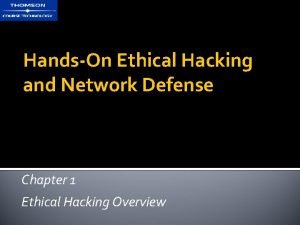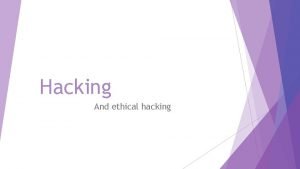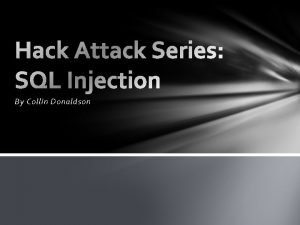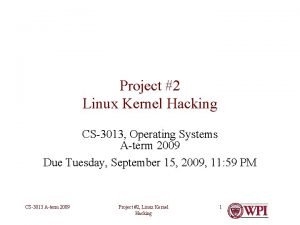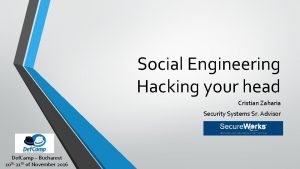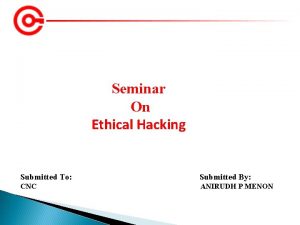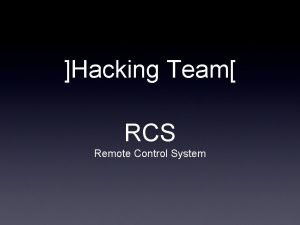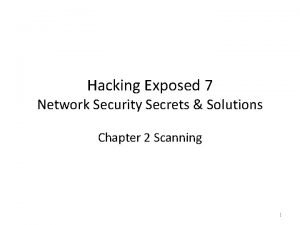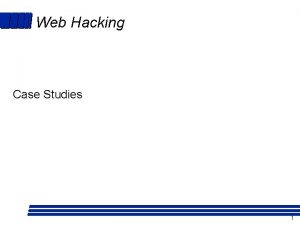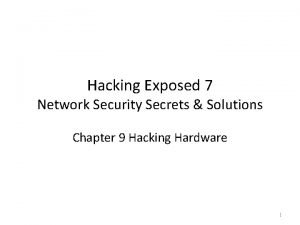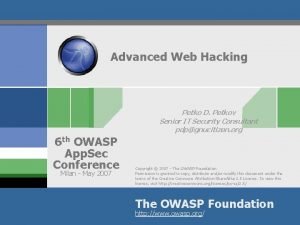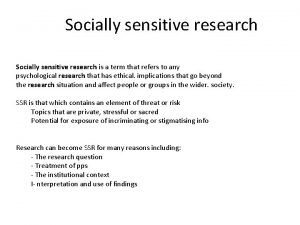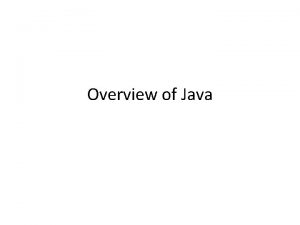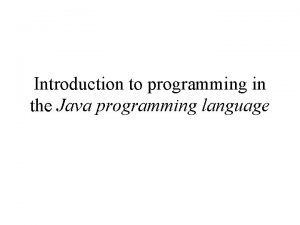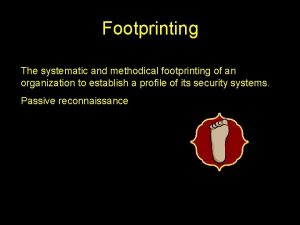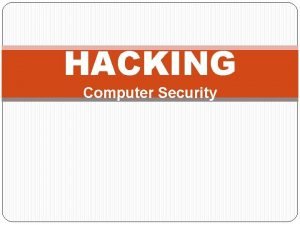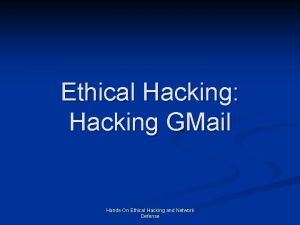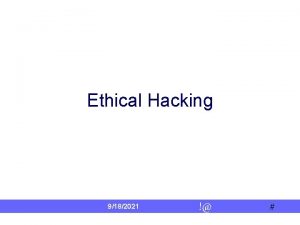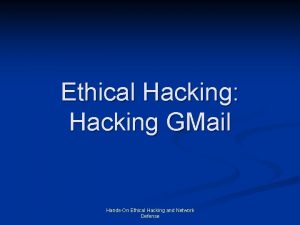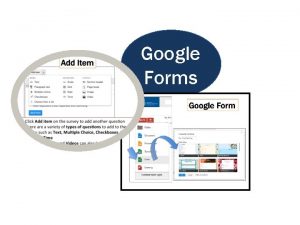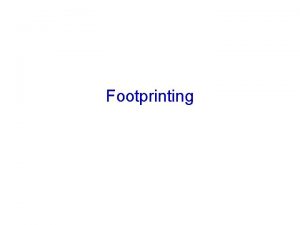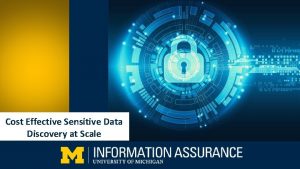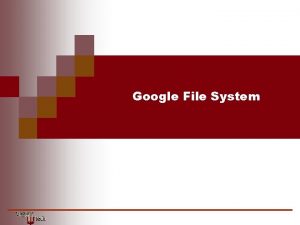Chapter 1 Footprinting Google Hacking Find sensitive data









































- Slides: 41

Chapter 1 Footprinting

Google Hacking Find sensitive data about a company from Google Completely stealthy—you never send a single packet to the target (if you view the cache) To find passwords: – intitle: "Index of" passwd. bak See links Ch 1 a, 1 b on my Web page (samsclass. info, click CNIT 124)

Other fun searches Nessus reports (link Ch 1 c) More passwords (link Ch 1 d)

Be The Bot See pages the way Google's bot sees them

Custom User Agents Add the "User Agent Switcher" Firefox Extension Try this Nokia one for fun More in Project 2

Footprinting Gathering target information "If you know the enemy and know yourself, you need not fear the result of a hundred battles. If you know yourself but not the enemy, for every victory gained you will also suffer a defeat. If you know neither the enemy nor yourself, you will succumb in every battle. " – Sun Tzu on the Art of War

Environments and the Critical Information Attackers Can Identify Extranet (vendors and business partners) Remote Access (travelling employees) Internet Presence Intranet

Internet Domain name Network blocks Specific IP addresses of systems reachable via the Internet TCP and UDP services running on each system identified System architecture (for example, Sparc vs. x 86) Access control mechanisms and related access control lists (ACLs) Intrusion-detection systems (IDSs) System enumeration (user and group names, system banners, routing tables, and SNMP information) DNS hostnames

Intranet Networking protocols in use (for example, IPX, Dec. NET, and so on) Internal domain names Network blocks Specific IP addresses of systems reachable via the intranet TCP and UDP services running on each system identified System architecture (for example, SPARC vs. x 86) Access control mechanisms and related ACLs Intrusion-detection systems System enumeration (user and group names, system banners, routing tables, and SNMP information)

Remote access Analog/digital telephone numbers Remote system type Authentication mechanisms VPNs and related protocols (IPSec and PPTP)

Extranet Connection origination and destination Type of connection Access control mechanism

Internet Footprinting Step 1: Determine the Scope of Your Activities Step 2: Get Proper Authorization Step 3: Publicly Available Information Step 4: WHOIS & DNS Enumeration Step 5: DNS Interrogation Step 6: Network Reconnaissance

Step 1: Determine the Scope of Your Activities Entire organization Certain locations Business partner connections (extranets) Disaster-recovery sites

Step 2: Get Proper Authorization Ethical Hackers must have authorization in writing for their activities – "Get Out of Jail Free" card – Criminals omit this step Image from www. blackhatseo. fr

Step 3: Publicly Available Information Company web pages – Wget and Teleport Pro are good tools to mirror Web sites for local analysis (links Ch 1 o & 1 p) – Look for other sites beyond "www" – Outlook Web Access https: //owa. company. com or https: //outlook. company. com – Virtual Private Networks http: //vpn. company. com or http: //www. company. com/vpn

Step 3: Publicly Available Information Related Organizations Physical Address – Dumpster-diving – Surveillance – Social Engineering Tool: Google Earth (link Ch 1 q)

Step 3: Publicly Available Information Phone Numbers, Contact Names, E-mail Addresses, and Personal Details Current Events – Mergers, scandals, layoffs, etc. create security holes Privacy or Security Policies, and Technical Details Indicating the Types of Security Mechanisms in Place

Step 3: Publicly Available Information Archived Information – The Wayback Machine (link Ch 1 t) – Google Cache Disgruntled Employees Search Engines – Site. Digger seems to be out of date—I tried to get it to work with a Google AJAX key but it doesn't – Wikto is an alternative that might still work (link Ch 1 u)

Step 3: Publicly Available Information Usenet – Groups. google. com Resumes

Step 4: WHOIS & DNS Enumeration Two organizations manage domain names, IP addresses, protocols and port numbers on the Internet – Internet Assigned Numbers Authority (IANA; http: //www. iana. org) – Internet Corporation for Assigned Names and Numbers (ICANN; http: //www. icann. org) – IANA still handles much of the day-to-day operations, but these will eventually be transitioned to ICANN

Step 4: WHOIS & DNS Enumeration Domain-Related Searches – Every domain name, like msn. com, has a toplevel domain -. com, . net, . org, etc. If we surf to http: //whois. iana. org, we can search for the authoritative registry for all of. com –. com is managed by Verisign

Step 4: WHOIS & DNS Enumeration

Step 4: WHOIS & DNS Enumeration Verisign Whois (link Ch 1 v) – Search for ccsf. edu and it gives the Registrar Whois. educause. net Three steps: – Authoritative Registry for top-level domain – Domain Registrar – Finds the Registrant

Step 4: WHOIS & DNS Enumeration Automated tools do all three steps – Whois. com – Sam Spade – Netscan Tools Pro They are not perfect. Sometimes you need to do the three-step process manually.

Step 4: WHOIS & DNS Enumeration Once you've homed in on the correct WHOIS server for your target, you may be able to perform other searches if the registrar allows it You may be able to find all the domains that a particular DNS server hosts, for instance, or any domain name that contains a certain string – BUT a court decision in South Dakota just declared this illegal (link Ch 1 o)

Step 4: WHOIS & DNS Enumeration How IP addresses are assigned: – The Address Supporting Organization (ASO http: //www. aso. icann. org) allocates IP address blocks to – Regional Internet Registries (RIRs), which then allocate IPs to organizations, Internet service providers (ISPs), etc. – ARIN (http: //www. arin. net) is the RIR for North and South America

Step 4: WHOIS & DNS Enumeration IP-Related Searches – To track down an IP address: Use arin. net (link Ch 1 x) It may refer you to a different database Examples: – 147. 144. 1. 1 – 61. 0. 0. 2

Step 4: WHOIS & DNS Enumeration IP-Related Searches – Search by company name at arin. net to find IP ranges, and AS numbers – AS numbers are used by BGP (Border Gateway Protocol) to prevent routing loops on Internet routers (link Ch 1 y) – Examples: Google, CCSF

Step 4: WHOIS & DNS Enumeration Administrative contact gives you name, voice and fax numbers Useful for social engineering Authoritative DNS Server can be used for Zone Transfer attempts – But Zone Transfers may be illegal now (link Ch 1 s)

Step 4: WHOIS & DNS Enumeration Public Database Security Countermeasures – When an administrator leaves an organization, update the registration database – That prevents an ex-employee from changing domain information – You could also put in fake "honeytrap" data in the registration e. Bay's domain was hijacked (link Ch 1 z 1)

Step 5: DNS Interrogation Zone Transfers – Gives you a list of all the hosts when it works – Usually blocked, and maybe even illegal now – Demonstration (with Ubuntu) dig soa hackthissite. org – ANSWER shows SOA is dns 1. nettica. com dig @ dns 1. nettica. com hackthissite. org axfr

Step 5: DNS Interrogation Determine Mail Exchange (MX) Records – You can do it on Windows with NSLOOKUP in Interactive mode

Step 5: DNS Interrogation DNS Security Countermeasures – Restrict zone transfers to only authorized servers – You can also block them at the firewall DNS name lookups are UDP Port 53 Zone transfers are TCP Port 53

Step 5: DNS Interrogation DNS Security Countermeasures – Attackers could still perform reverse lookups against all IP addresses for a given net block – So, external nameservers should provide information only about systems directly connected to the Internet

Step 6: Network Reconnaissance Traceroute – Can find route to target, locate firewalls, routers, etc. Windows Tracert uses ICMP Linux Traceroute uses UDP by default

Tracert

Neo. Trace combines Tracert and Whois to make a visual map (link Ch 1 z 2)

Step 6: Network Reconnaissance Cain & Abel has a customizable Traceroute function that lets you use any TCP or UCP port, or ICMP – Link Ch 1 z 4 – But it didn't work when I tried it on XP or Vista

Step 6: Network Reconnaissance Firewalk uses traceroute techniques to find ports and protocols that get past firewalls We will discuss Firewalk later (Chapter 11)

Step 6: Network Reconnaissance Countermeasures – Many of the commercial network intrusiondetection systems (NIDS) and intrusion prevention systems (IPS) will detect this type of network reconnaissance – Snort – the standard IDS(link Ch 1 z 5) – Roto. Router – Detects traceroutes and sends fake responses (link Ch 1 z 6)

Step 6: Network Reconnaissance Countermeasures – You may be able to configure your border routers to limit ICMP and UDP traffic to specific systems, thus minimizing your exposure – Last modified 1 -21 -08
 Aldy bug
Aldy bug Footprinting vs enumeration
Footprinting vs enumeration Hacking disclaimer
Hacking disclaimer Google hacking wiki
Google hacking wiki Index.of.secret
Index.of.secret Goolag scanner
Goolag scanner Createyourgoogleaccount
Createyourgoogleaccount Anatomi hacking
Anatomi hacking Hands on ethical hacking and network defense
Hands on ethical hacking and network defense Astra greek hacker
Astra greek hacker Usb hacking tools
Usb hacking tools Disclaimer for hacking
Disclaimer for hacking Linux kernel programming part 2
Linux kernel programming part 2 Ethical hacking terminologies
Ethical hacking terminologies Ethicsl hacking
Ethicsl hacking Hacking disclaimer
Hacking disclaimer Linux kernel hacking
Linux kernel hacking Hacking your head
Hacking your head Future enhancement of ethical hacking
Future enhancement of ethical hacking Speech on ethical hacking
Speech on ethical hacking Hackingteam rcs console
Hackingteam rcs console Hacking exposed 9
Hacking exposed 9 Xss advanced
Xss advanced Tamagotchi hacking
Tamagotchi hacking Growth hacking case studies
Growth hacking case studies Hacking exposed 9
Hacking exposed 9 Advanced website hacking
Advanced website hacking Lgoogle calendar
Lgoogle calendar Konichiwa prijevod
Konichiwa prijevod Https//scholar.google.com.br
Https//scholar.google.com.br Google docshttps://mail.google.com/mail/u/0/#inbox
Google docshttps://mail.google.com/mail/u/0/#inbox Charge sensitive preamplifier
Charge sensitive preamplifier Pris syndrome
Pris syndrome The development of children 7th edition
The development of children 7th edition Patella type 3
Patella type 3 Disclaimer for sensitive content
Disclaimer for sensitive content Conducting socially sensitive research
Conducting socially sensitive research Nursing sensitive indicators
Nursing sensitive indicators Java is case sensitive explain
Java is case sensitive explain Not case sensitive meaning
Not case sensitive meaning Lipoprotein lipase vs hormone sensitive lipase
Lipoprotein lipase vs hormone sensitive lipase Critical period vs sensitive period
Critical period vs sensitive period
